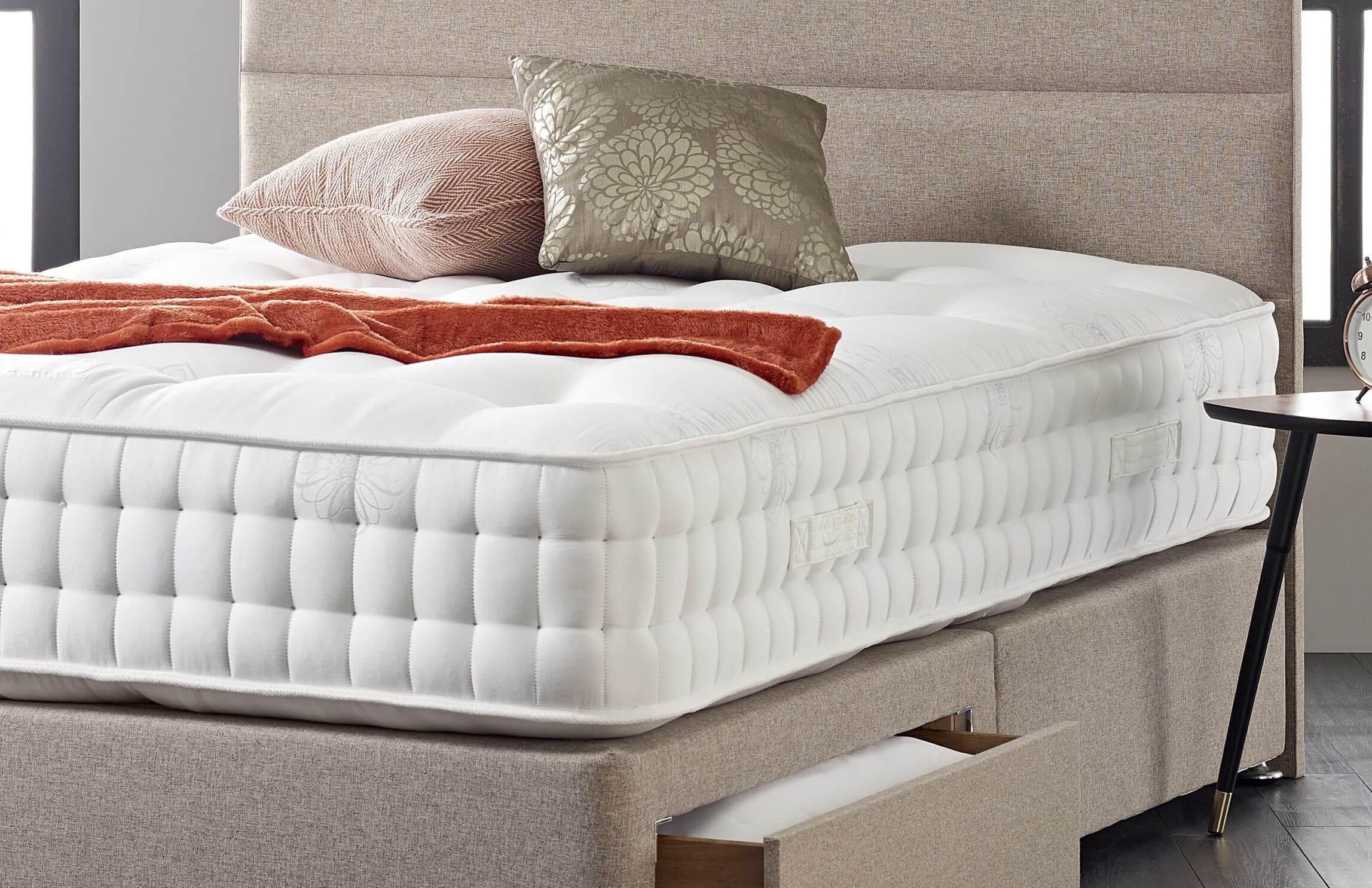Getting a good night’s sleep starts with choosing the right mattress. But with so many options on the market, picking the perfect one can be overwhelming. The wrong mattress can lead to back pain, restless nights, and groggy mornings, while the right one can improve your health, mood, and overall quality of life.
In this sleep guide, we’ll explore six common types of mattresses, their benefits, and how to choose the one that best suits your body and sleep preferences. Whether you’re a side sleeper, suffer from back pain, or looking for something eco-friendly, this guide will help you make an informed choice.
1. Memory Foam Mattresses
Table of Contents
What is Memory Foam?
Memory foam is made from viscoelastic polyurethane foam that reacts to body heat and pressure, molding to your shape.
Benefits:
- Excellent pressure relief for joints and back
- Ideal for side sleepers and people with chronic pain
- Good motion isolation (great for couples)
Drawbacks:
- Can retain heat unless it has cooling gel or open-cell tech
- May feel too soft for stomach sleepers
Best For:
People who want contouring comfort and sleep alone or with a partner who tosses and turns.
2. Innerspring Mattresses
What are Innerspring Mattresses?
These traditional mattresses use a coil support system, typically topped with a layer of padding or foam.
Benefits:
- Great breathability and airflow
- Responsive and supportive
- Budget-friendly options available
Drawbacks:
- Less contouring than memory foam
- Can be noisy and have less motion isolation
Best For:
Back and stomach sleepers who prefer a firmer, bouncier feel.
3. Latex Mattresses
What is Latex?
Made from natural or synthetic rubber, latex mattresses are known for their durability and eco-friendliness.
Benefits:
- Naturally cooling and breathable
- Hypoallergenic and dust mite resistant
- Long lifespan (10+ years)
Drawbacks:
- Heavier and harder to move
- More expensive than other types
Best For:
Eco-conscious buyers, allergy sufferers, and those wanting a responsive but comfortable sleep surface.
4. Hybrid Mattresses
What are Hybrid Mattresses?
Hybrid mattresses combine innerspring coils with layers of memory foam, latex, or gel.
Benefits:
- Balanced support and comfort
- Great for all sleeping positions
- Good motion isolation with bounce
Drawbacks:
- Can be pricey
- Heavier and difficult to move
Best For:
Couples with different sleep styles, or anyone who wants a “best of both worlds” feel.
5. Pillow Top Mattresses
What is a Pillow Top?
Pillow top mattresses have an additional layer of soft padding sewn onto the top for extra comfort.
Benefits:
- Extra plush feel
- Great pressure relief for hips and shoulders
- Available in various firmness levels
Drawbacks:
- Can sag over time
- May require regular rotation
Best For:
Side sleepers and those who love a soft, cloud-like surface.
6. Adjustable Air Mattresses
What is an Adjustable Air Mattress?
These mattresses use air chambers as the main support system and often come with remote or app-controlled firmness settings.
Benefits:
- Adjustable firmness levels
- Often include dual zones for couples
- Lightweight and portable
Drawbacks:
- Expensive
- Requires electricity for adjustments
Best For:
People with changing sleep needs or couples with different firmness preferences.
How to Choose the Right Mattress
Consider Your Sleeping Position
- Side sleepers: Memory foam, pillow top, hybrid
- Back sleepers: Innerspring, hybrid, latex
- Stomach sleepers: Firm innerspring or latex
Think About Your Body Type
- Heavier individuals may prefer firmer mattresses with more support.
- Lighter individuals may enjoy softer mattresses that contour easily.
Health Conditions
- Back pain: Memory foam or hybrid with lumbar support
- Allergies: Natural latex or hypoallergenic materials
Budget
- Entry-level: Innerspring or basic foam
- Mid-range: Hybrid or memory foam with cooling features
- Premium: Latex or adjustable air mattresses
Trial Period and Warranty
Look for brands that offer at least a 90–120 night sleep trial and a 10-year warranty.
Conclusion
Choosing the right mattress can transform your sleep and overall well-being. From the body-contouring magic of memory foam to the natural bounce of latex and the custom comfort of hybrid designs, each mattress type offers unique benefits. Think about your sleep style, preferences, and any physical conditions before making a purchase.
A good mattress is an investment in your health—so take your time, do your research, and don’t be afraid to test a few out before you commit.
Sweet dreams start with smart choices.
FAQs
Q1: How often should I replace my mattress?
A: On average, every 7–10 years depending on the type and quality.
Q2: What mattress is best for back pain?
A: Memory foam or a hybrid with zoned lumbar support are great options.
Q3: Do expensive mattresses guarantee better sleep?
A: Not necessarily. The best mattress is one that suits your unique sleep needs.
Q4: Is a firmer mattress always better?
A: No. Firmness should be chosen based on your sleeping position and body type.
Q5: Can I try a mattress before buying?
A: Many brands offer home trials lasting 90–120 nights.

